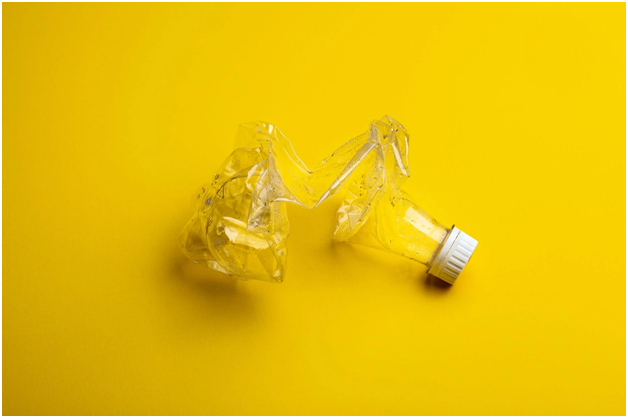
- Have you all heard about the “Three R’s” of sustainability: The Reduce, Reuse and Recycle? These magical words can make all living things thrive, and humans can accelerate their implementation for a better future.
- Why is it important to reduce your consumption and waste creation, reuse the items you already own, and recycle old materials instead of buying new ones?
- We only live once, and it is only on the planet earth. If we do not care for it, then who will? Though the earth takes care of us in many different ways, humans produce too much unsustainable waste.
- The 3 R initiative intends to create a sustainable material-cycle society globally by maximizing resources and material efficiency. The 3 R’s principle involves reducing waste, reusing, and recycling products and resources. Humans can avoid water, air, and land pollution through these three essential guidelines to benefit all living things.
- Saving our natural resources from destruction and extinction must be our topmost priority.
- The 3 R should be prioritized because humans produce waste chemicals, such as leachate, methane, and carbon dioxide, that destroy the soil, air, and water. These greenhouse gases released into the atmosphere are causing global warming, climate change, flooding, water contamination, death of plants and animals, and diseases among humans.
- Everything in our world is connected, meaning that if something happens to the environment, everyone suffers.
- The 3 Rs helps in conserving energy and sustaining the environment.
- The 3Rs are also important in taking care of the earth and saving future generations.
Thus, we can do many things too that can help the Earth. To do these, let us look into these 3 R’s for us to be able to know how to do it.
1. REDUCE

To define, reduce means using less. It is the most important because we do not make garbage in the first place; we save energy on production, save fuel on repurposing it into something new, and do not end up in our trash or our oceans. Reducing means buying less and using less. Reducing involves deciding to use something with care to minimize waste—the practice of reusing objects or portions of items that are still usable. It also means cutting back on the amount of trash we generate. If you think about it, there are a lot of things you don’t need.
There are many ways to reduce: Do not use plastic bags, if you go to the supermarket, make sure you bring your bag instead of using the disposable one given to you because by doing this you will be reducing mountains of the amount of very contaminating plastics; Do not need to leave lights when you are not using it, nor television and computers when no one is watching or using; Reduce kitchen waste by converting them into vermicomposting; If you remember that papers come from trees, you will be reducing the number of documents you are using as well as energy, you are helping to reduce the contamination, and Take care of your stuff, so you do not always buy something new.
Well, these are just a few examples, and I am sure you can think of countless different ways to reduce what you are using in unnecessary ways. The following question will help you with this task, “Do I need this, or is this just a whim?”
2. REUSE

Reuse means using an item again and again. So we do not make new products. Find new ways to use things that can still be useful instead of throwing them away. Such as donating old clothes and toys to be reused or sold, use rechargeable batteries, and use reusable containers and bags to avoid generating waste.
Among your pieces of stuff, how many things do you think we can reuse again and again instead of throwing them away? Let us see, here are some other examples of everyday items that we reuse much time over:
- Clothing, bedding, and towels
- A piece of paper, newspaper, and office paper
- A box and bags, and plastic bottles, jugs, and containers
- Glass bottles and jars
Are there more ways we can reuse?
3. RECYCLE

Recycling is the process of new items made from old items. Now, it is effortless than ever to reuse and recycle things we don’t need anymore. We see containers or garbage cans for plastics, paper, or organic ways in our homes or communities. Using them will avoid contaminating the nature-rivers and seas and the atmosphere, the air we breathe. For example, we see things that seem to be a waste already around us, like plastic bottles, but we can use these as decorative materials to beautify the surroundings. With just a little bit of imagination, I’m sure you can develop fun and new uses for them. We can also recycle paper and cardboard, glass bottles and jars, and metals and plastic containers.
CONCLUSION
Applying the 3 R rules will make the world a better place and reserved for future generations, the Earth a cleaner planet with less contamination, and enjoy a better life.
The “3 Rs” principle refers to reducing waste, reusing, and recycling resources and products. The use of waste as a resource is known as recycling. Waste minimization can be accomplished more effectively by focusing on the first of the 3Rs, “reduce,” then “reuse,” and finally “recycle.” These are very crucial. If you are planning to travel while saving energy and at the same time taking care of the Earth—a steward of nature, Shariot offers personalized car-sharing and car rental services. We provide cars that will help you enjoy your travel while being friendly with the planet. Your Shariot awaits—affordable and safe travel experience in Singapore for your hourly and daily needs.
Let us all continue to become good stewards of Earth. Let us reduce, reuse, and recycle—for you, for us, for the future.






No comment yet, add your voice below!